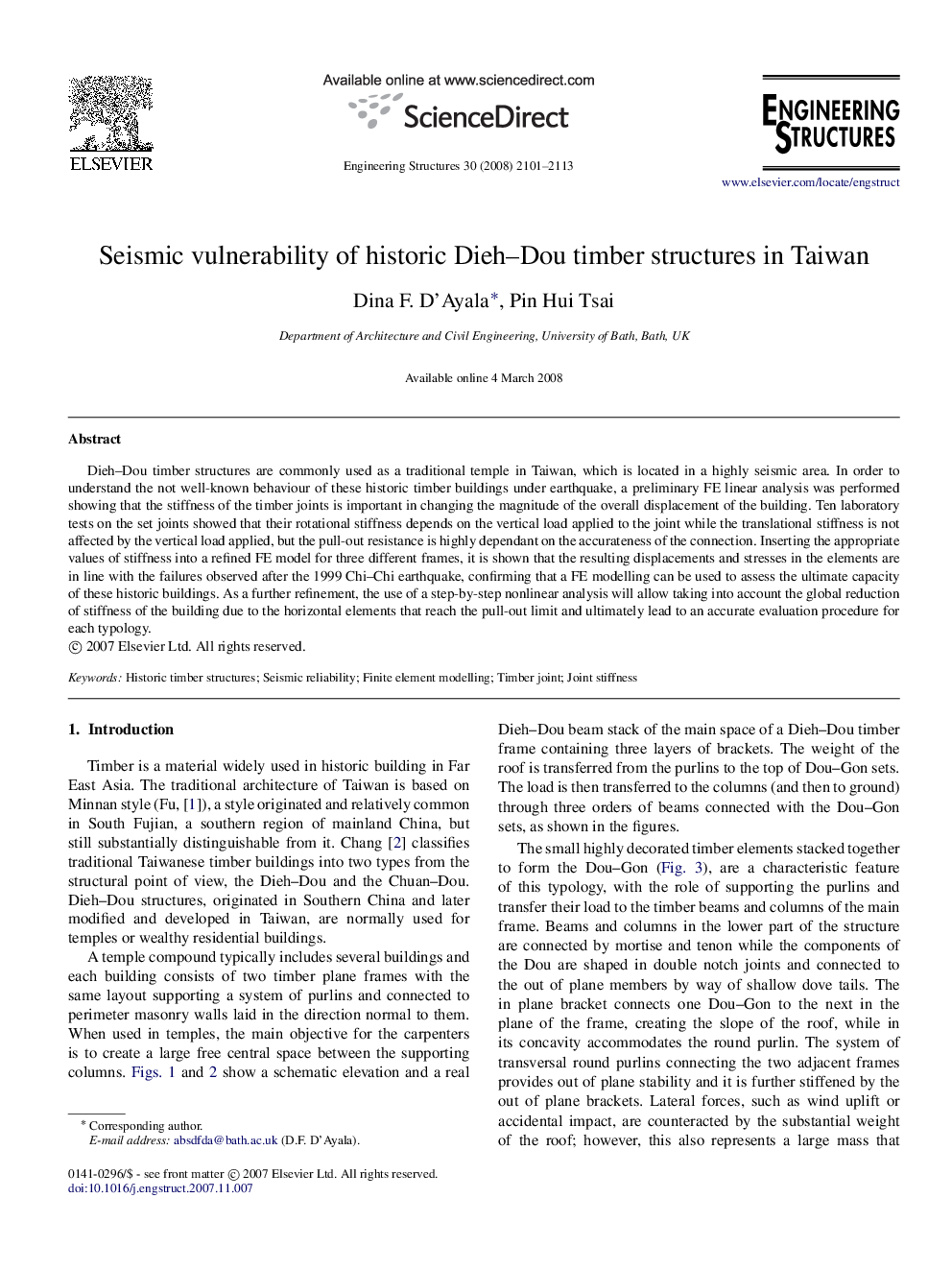| Article ID | Journal | Published Year | Pages | File Type |
|---|---|---|---|---|
| 269121 | Engineering Structures | 2008 | 13 Pages |
Dieh–Dou timber structures are commonly used as a traditional temple in Taiwan, which is located in a highly seismic area. In order to understand the not well-known behaviour of these historic timber buildings under earthquake, a preliminary FE linear analysis was performed showing that the stiffness of the timber joints is important in changing the magnitude of the overall displacement of the building. Ten laboratory tests on the set joints showed that their rotational stiffness depends on the vertical load applied to the joint while the translational stiffness is not affected by the vertical load applied, but the pull-out resistance is highly dependant on the accurateness of the connection. Inserting the appropriate values of stiffness into a refined FE model for three different frames, it is shown that the resulting displacements and stresses in the elements are in line with the failures observed after the 1999 Chi–Chi earthquake, confirming that a FE modelling can be used to assess the ultimate capacity of these historic buildings. As a further refinement, the use of a step-by-step nonlinear analysis will allow taking into account the global reduction of stiffness of the building due to the horizontal elements that reach the pull-out limit and ultimately lead to an accurate evaluation procedure for each typology.
